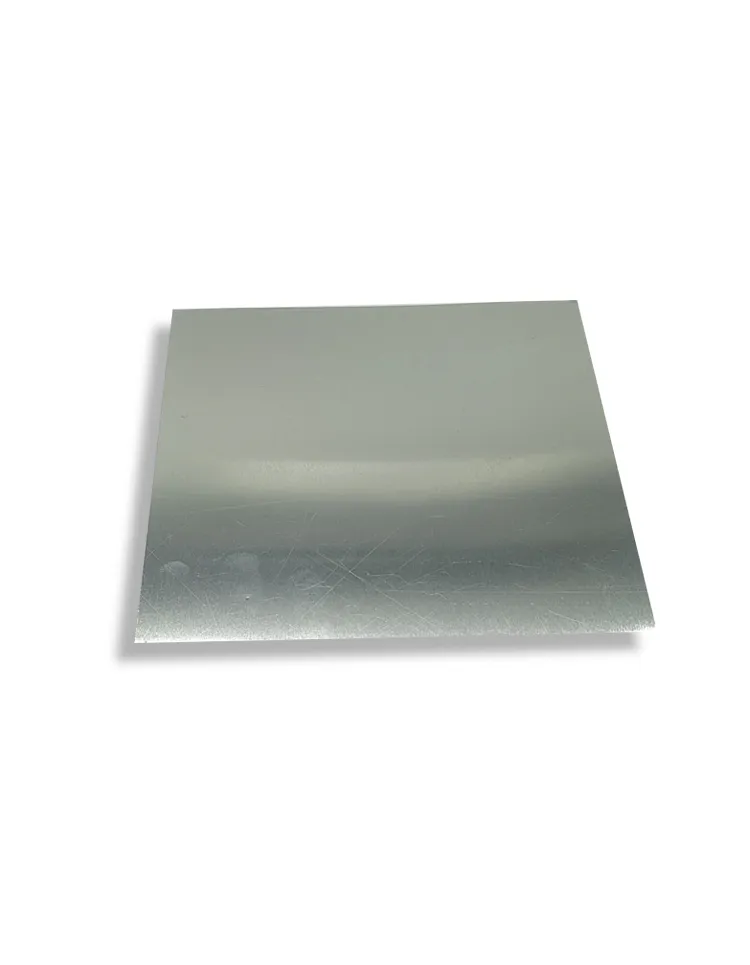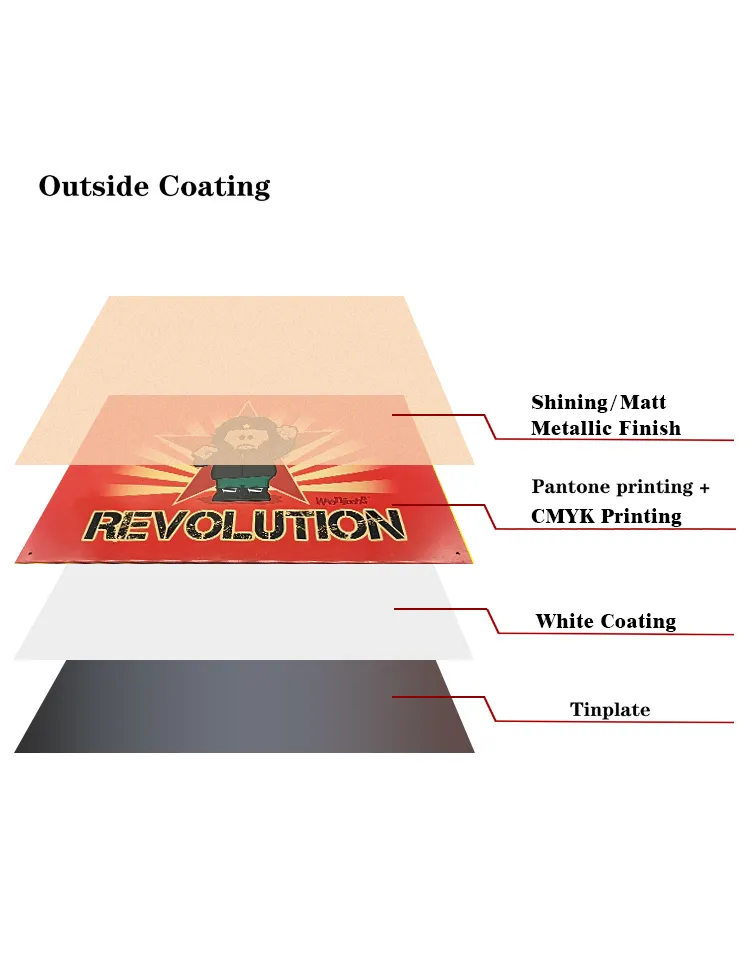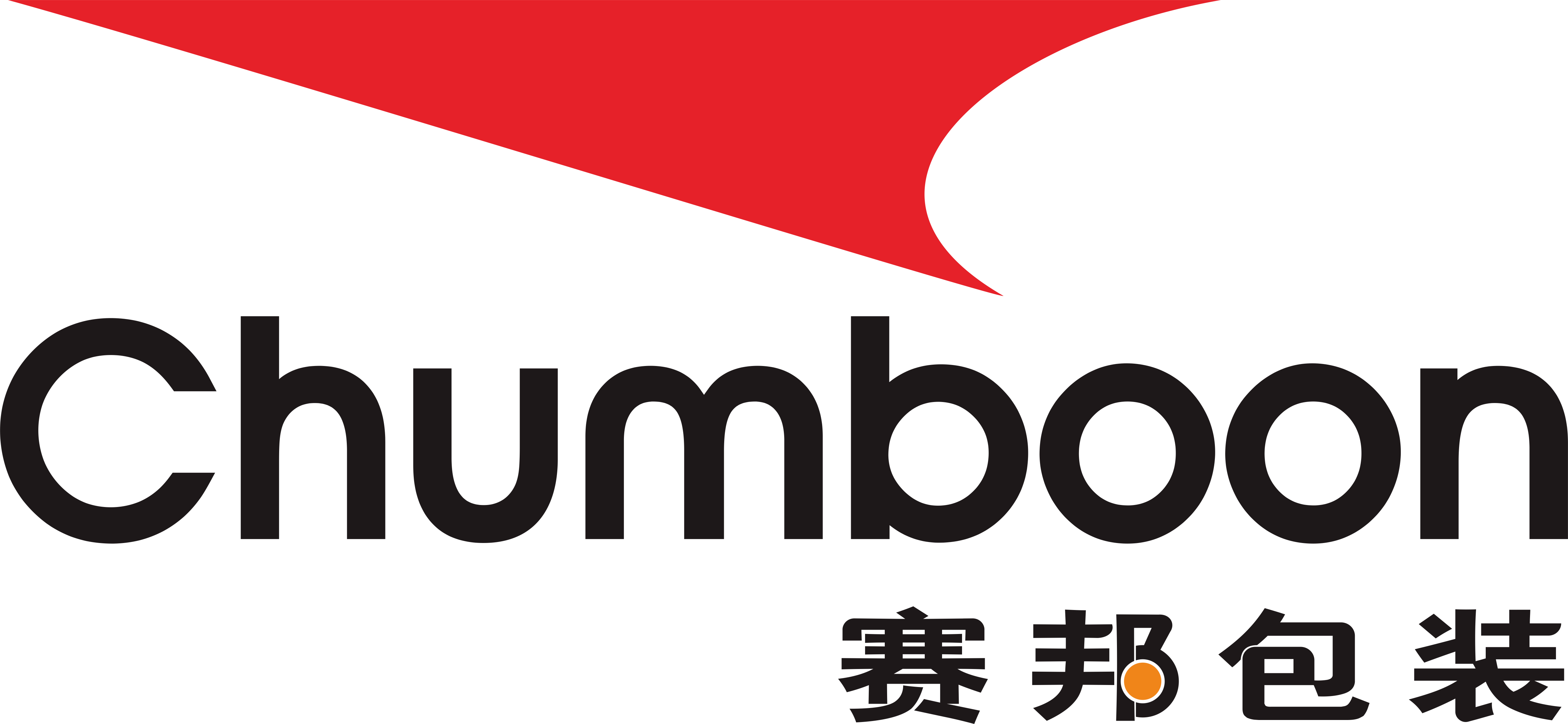Tinplate is a thin steel plate that has been tinned and is widely used in the packaging of food, beverages, chemical products, etc. Due to its excellent anti-corrosion performance and beautiful appearance, tinplate occupies an important position in the packaging industry. The processing flow of tinplate printing is complex and delicate, requiring high-level technical and equipment support.
This article will introduce the processing flow of printing tinplate in detail to help readers understand this high-demand and high-standard production process.

What is the processing flow of tinplate printing?
The processing flow of tinplate printing:
1. Raw material preparation (tinplate original plate, coating material),
2. Surface treatment (cleaning, chemical treatment),
3. Coating treatment (primer, printing, topcoat),
4. Post-processing process (baking, cooling),
5. Cutting and forming,
6. Packaging and delivery.
1. Raw material preparation:
Tinplate original plate:
● Material selection standard: The selection of tinplate original plate is very important, and it must have high strength, good ductility and excellent surface quality. Low carbon steel is usually used as the substrate, and a layer of tin is evenly plated on its surface through the electroplating process.
● Specification selection: Choose the appropriate specifications of tinplate original plate according to different application requirements. Common specifications include parameters such as thickness, width and length, which need to be customized according to actual production requirements.
Coating materials:
● Protective coating: Before printing, tinplate needs to be coated to protect its surface from pollution and oxidation. Commonly used coating materials include epoxy resin, polyester, etc. Choose the appropriate coating material according to specific application requirements.
2. Surface treatment:
Cleaning:
● Degreasing: Before entering the production line, the tinplate original plate needs to be degreased to remove oil and impurities on the surface. Commonly used degreasing methods include alkaline washing, ultrasonic cleaning, etc.
● Water washing: After degreasing, the tinplate needs to be washed with water many times to thoroughly remove the residual cleaning agent to ensure that the surface is clean and pollution-free.
Chemical treatment:
● Phosphating: Phosphating forms a phosphating film on the surface of the tinplate to improve the adhesion and corrosion resistance of the coating. Phosphating needs to be carried out under specific temperature and time conditions to ensure the treatment effect.
● Passivation treatment: After phosphating, tinplate needs to be passivated to further improve its corrosion resistance. Chromates or other environmentally friendly passivators are usually used for passivation.

3. Coating treatment:
Primer coating:
● Primer coating: Apply a layer of primer evenly on the surface of tinplate. The selection of primer needs to consider the compatibility with subsequent printing inks. The coating thickness of the primer needs to be strictly controlled to ensure that the coating is uniform and flawless.
● Drying and curing: After applying the primer, the tinplate needs to be sent to the drying furnace for drying and curing. The drying temperature and time need to be adjusted according to the type and coating thickness of the primer to ensure that the primer is completely cured.
Printing:
● Lithography: Tinplate printing usually adopts lithography (i.e. offset printing) technology. Lithography has the advantages of high printing precision and good color reproduction, and is suitable for high-demand tinplate printing.
● Four-color printing: The commonly used printing method is four-color printing (CMYK), which achieves full-color printing by superimposing four colors of cyan, magenta, yellow and black. Each color needs to be printed on a dedicated printing machine to ensure accurate color reproduction.
Topcoating:
● Topcoat coating: After printing, a layer of topcoat needs to be applied on the tinplate surface to protect and decorate. The selection of topcoat needs to consider factors such as wear resistance, corrosion resistance and glossiness.
● Drying and curing: After applying the topcoat, it needs to be dried and cured again. The drying and curing process needs to strictly control the temperature and time to ensure the uniformity and firmness of the topcoat.
4. Post-processing process:
Baking:
● Heat treatment: After printing and coating, the tinplate needs to be heat treated. The coating is completely cured by high-temperature baking to improve its wear resistance and corrosion resistance. Heat treatment needs to be carried out in a dedicated baking furnace, and the temperature and time need to be adjusted according to the characteristics of the coating material.
Cooling:
● Natural cooling: The tinplate after heat treatment needs to be cooled, usually by natural cooling or forced air cooling, to ensure the stability of the coating.
● Quality inspection: The cooled tinplate needs to undergo strict quality inspection, including appearance inspection, coating adhesion test, color reproduction inspection, etc., to ensure that each tinplate meets the quality standards.

5. Cutting and forming:
Cutting:
● Specification cutting: Cut the tinplate into specified specifications according to customer needs. High-precision cutting equipment must be used in the cutting process to ensure the accuracy of the cutting size and the smoothness of the edges.
● Waste treatment: The waste generated during the cutting process must be recycled to avoid waste and environmental pollution.
Forming:
● Stamping forming: The cut tinplate is made into cans or lids of various shapes through the stamping process. The design of the stamping mold must be precisely customized according to the shape and size of the product to ensure the forming effect.
● Welding forming: For tinplate products that need to be welded, such as food cans, beverage cans, etc., welding forming is required. The welding temperature and time must be controlled during the welding process to ensure the firmness and sealing of the welding points.
6. Packaging and delivery:
Final inspection:
● Appearance inspection: The tinplate products after molding need to undergo a final appearance inspection to ensure that there are no scratches, bubbles, color difference and other defects on the surface.
● Functional test: For tinplate products that require sealing performance, such as food cans, beverage cans, etc., a sealing test is also required to ensure the safety of the product.
Packaging:
● Packaging materials: According to the characteristics of the product and the requirements of the customer, choose appropriate packaging materials for packaging. Commonly used packaging materials include plastic film, cartons, wooden boxes, etc.
● Protective measures: During the packaging process, protective measures must also be taken to prevent bumps and deformation during transportation, and ensure that the product arrives in the hands of the customer intact.
Delivery:
● Logistics arrangement: After packaging is completed, logistics transportation is arranged according to customer needs. During transportation, attention should be paid to moisture-proof, shock-proof, and pressure-proof to ensure that the product arrives safely at the destination.
● After-sales service: Provide customers with comprehensive after-sales service, including product installation guidance, instructions for use, maintenance, etc., to ensure customer satisfaction.

Conclusion
The processing of printing tinplate involves multiple links, and each link requires high-standard technology and equipment support. From raw material preparation, surface treatment, coating treatment, printing, post-processing process, to cutting, molding, packaging and delivery, each step requires strict control and fine operation to ensure the quality and performance of the final product.

